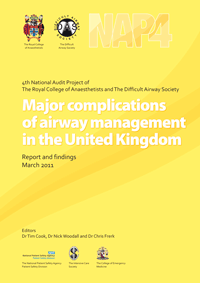What do we do after the tube is in?
No. It is not time to use the laryngoscope blade as a bottle opener. There is a lot still to do.
The quotes are some of the points Dr. Weingart makes. The comments here are mine.
Achieve Adequate Analgesia and Sedation
I won’t belabor this, because I’ve discussed it in so many other podcasts, such as the one about not leaving your patient in a nightmare[1]
Even a hypotensive trauma patient, who is not adequately sedated, will be worse off without sedation.
Pain is not an appropriate pressor.
Hook Up the ETCO2
You read NAP4 right? Continuous waveform ETCO2 until the ET tube gets pulled[1]
Maybe we can get away with the carelessness of not using continuous waveform capnography for a long time, but carelessness often shows up in other areas of patient care.
The foolishness of not recognizing the benefit of continuous waveform capnography is the bigger problem.
Alarms do not make up for incompetence.
Have a Plan for Vent Alarms
Treat them like a cardiac arrest announced overhead.[1]
Alarms are annoying.
That is the idea. If the alarm is not annoying, we tend to ignore it.
Why do we ignore alarms?
There are a variety of reasons.
We may leave all of the alarms on – even the ones we know that we do not care about.
If we are not going to do something about an alarm, because we do not think that the alarm is warning of anything important, we are only training ourselves to ignore alarms.
We become accustomed to alarms going off almost continuously, so the alarms become ironic. They are anything but alarming, when they are alarming.
If an alarm is not going to produce an instant response from staff, turn it off.
The purpose of an alarm is to produce a response.
The response is not to ignore the alarm.
The response is also not to just reset the alarm.
As with pulse oximetry, the response is not to just do something temporary, like turn up the oxygen in response to a low oxygen saturation.
The response is to address the cause of the alarm.
If the sat is low, why is it low?
Why is the same amount of oxygen no longer producing adequate oxygenation?
Or is something decreasing the amount of oxygen the patient is receiving?
Is the patient agitated and in need of more sedation, rather than just turning the oxygen up to meet the increased oxygen demands of an agitated patient?
If we want people to ignore alarms, the best way is to put alarms on every function possible. If it can alarm, it will alarm – then nobody will take alarms seriously.
If those of us responding to the alarms are not smart enough to be able to decide which alarms we should have turned on, then we aren’t smart enough to respond appropriately to the alarms.
Some places already require this level of continuous alarm incompetence.
Alarms on everything – dumbing down patient care to the point where competence is punished.
–
Footnotes:
–
[1] Podcast 84 – The Post-Intubation Package
by EMCRIT
October 16, 2012
Web page with links to supporting information and link to mp3 download of podcast
.






Subscribe to RogueMedic.com